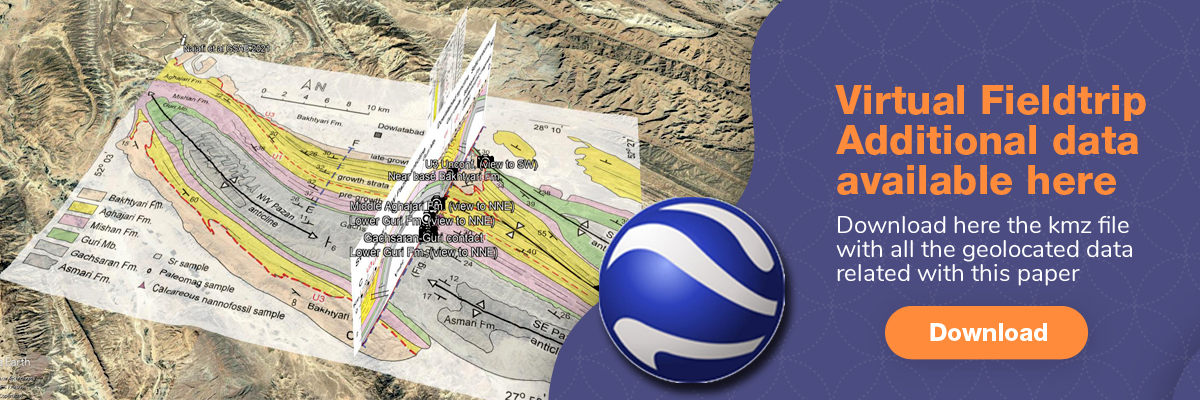4 de November de 2020
Najafi, M., Beamud, E., Ruh, J., Mouthereau, F., Tahmasbi, A., Bernaola, G., Yassaghi, A., Motamedi, H., Sherkati, S., Hassan Goodarzi, M. G., & Vergés, J. (2020). Pliocene growth of the Dowlatabad syncline in Frontal Fars arc: Folding propagation across the Zagros Fold Belt, Iran. GSA Bulletin. https://doi.org/10.1130/B35748.1
Abstract
The integration of biostratigraphy, strontium isotope stratigraphy, and magnetostratigraphy allowed for the precise dating of the >3.0-km-thick marine to non-marine foreland sedimentary succession within the Dowlatabad growth syncline along the Frontal Fars arc in the Zagros Fold Belt that extends from eastern Turkey to southern Iran. This area was the missing link to complete the dating of syntectonic deposits in the Fars arc and quantify the migration of sedimentary belts as well as the propagation of folding across the entire Mesopotamian foreland basin. Both are essential for defining the interplay of basin evolution and sequence of folding. Deposition of the foreland marine marls in the Mishan Formation started at ca. 11.5 Ma. The transition to a non-marine basin infill occurred at 4.9 Ma by the progradation of thick fluvial deposits of the Aghajari Formation with a fast accumulation rate of 63 cm/k.y. The beginning of growth strata deposition and thus the onset of folding in the Dowlatabad syncline is dated at 4.65 Ma. The first appearance of carbonate conglomerates sourced from the Guri limestone at 2.8 Ma marked the progressive dismantling of the nearby growing anticlines. The tectonic deformation in the front of the Fars arc was active for at least 2.85 m.y. and ceased at 1.8 Ma before the deposition of the discordant and slightly folded Bakhtyari conglomerates characterized by a clast composition derived from the Zagros hinterland. The compilation of magnetostratigraphic ages reveals that both the migration of the Aghajari-Bakhtyari sedimentary belts and the propagation of the folding front was in-sequence toward the foreland at a rate close to 20 mm/yr in the Fars arc and 15 mm/yr in the Lurestan arc, in the last 20 m.y. These high rates of folding propagation are about one order of magnitude larger than age equivalent shortening rates (∼4 mm/yr in Fars arc and ∼2 mm/yr in Lurestan arc) and thus imply an efficient detachment level at the base of the deformed Arabian sedimentary cover. Numerical experiments on both the cover and basement sequences are designed to test the influence of inherited basement structures on the deformation propagation within the cover sequence, providing clues on the partly coeval in-sequence deformation of the Zagros Simply Folded Belt and the local out-of-sequence Mountain Frontal Fault system as illustrated by regional and local geology.
Acces to the article via Digital.CSIC institutional repository
Virtual fieldtrip: additional resources and data
Download here the kmz file with additional data of this research

